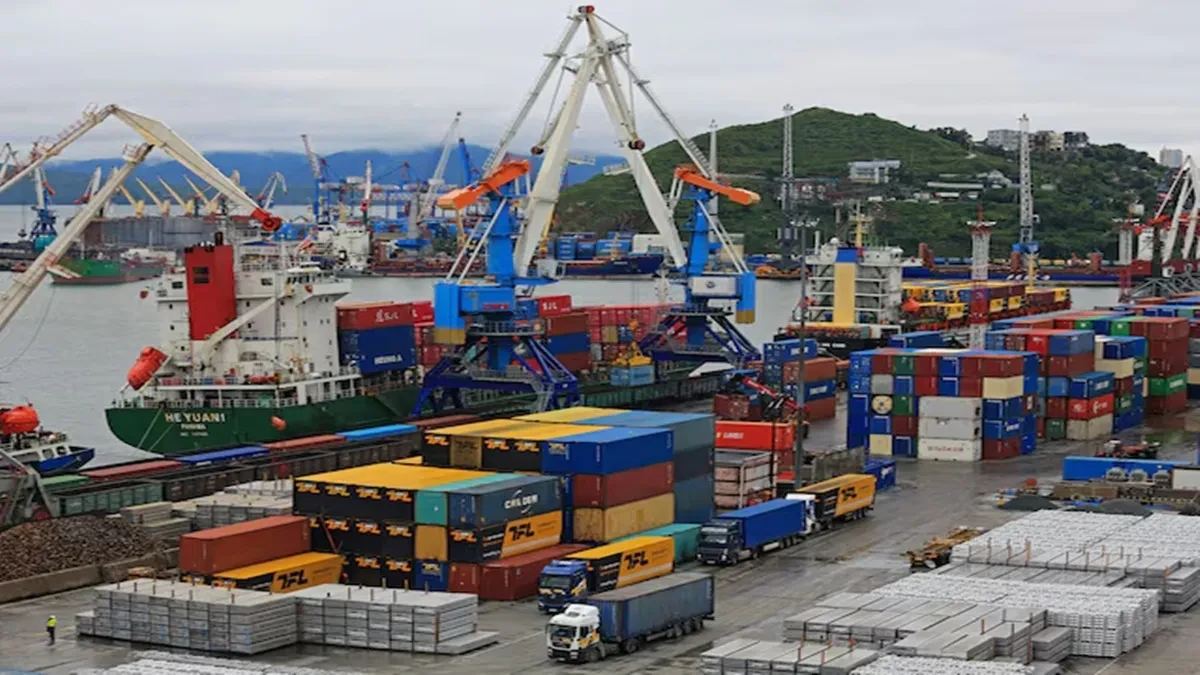By Ashok Gulati & Ritika Juneja, respectively distinguished professor and research fellow, ICRIER
In a year marked by shifting tariffs by the Trump administration and global geopolitical tensions, India’s trade performance faces many challenges.
While the India-UK free trade agreement (FTA) has been concluded, the bilateral trade agreement (BTA) with the US is still under negotiation.
Meanwhile, it would be interesting to review and reflect on India’s FY25 trade performance.India’s total exports, comprising goods and services, rose to $820.93 billion in FY25, marking a 6.5% increase over FY24. Merchandise accounted for $437.42 billion (53%), while services, powered by India’s global edge in IT, finance, and business solutions, contributed $383.51 billion (47%).
Imports, however, grew faster at 6.85%, reaching $915.19 billion. Merchandise made up the lion’s share (79%) of imports with $720.24 billion, while services added $194.95 billion (21%). This pushed the trade deficit to $94.26 billion, from $78.39 billion in FY24. With the International Monetary Fund pegging India’s nominal GDP at $4.19 trillion in FY25, the trade-to-GDP ratio stands at a robust 41.4% – reflecting deeper ties with global markets.
In the case of agriculture, which employs over 46% of India’s workforce, exports inched up to $52 billion in FY25 from $48.9 billion in FY24, registering a modest 6.3% increase. While this is a welcome trend, it’s still far from the $100-billion target set for 2030. Compare this with the performance between FY05 and FY14, when agri-exports grew by an average 20% annually, leaping from $8.7 billion to $43.3 billion.
The last decade, in contrast, has been sluggish. From FY15 to FY25, average annual growth collapsed to just 2.3%. As a result, India’s agri-trade surplus shrank from $27.7 billion in FY14 to just $13.8 billion in FY25.Several factors explain this. Global price trends are one. When world agri-prices rise, Indian exports benefit. When they fall, we lose ground. But there’s more at play. Domestic trade policies – especially frequent export bans and curbs on essentials like rice and wheat – have repeatedly disrupted export momentum.
These measures are often driven by inflation fears at home.Take rice, India’s top agricultural export in FY25, as a case in point. India exported 20.2 million metric tonnes (MMT) worth $12.5 billion, nearly one-fourth of all agri-exports. The government’s rice export controls in FY23 offer useful lessons. As India restricted broken rice exports, slapped duties on parboiled rice, and introduced a minimum export price for basmati, global rice prices spiked.
Although volume of exports fell by 27% – from 22.3 MMT in FY23 to 16.3 MMT in FY24 – their value dropped by only 6%. Once most restrictions were lifted in late 2024, rice exports bounced back to 20.2 MMT, bringing in $12.5 billion in FY25. This points to a critical insight: India’s dominance in rice trade – about one-third of the 61.4-MMT market in FY25 – gives it the power to influence global prices. But over-exporting depresses these prices, yielding lower marginal revenue. Our analysis of optimal export tax suggests that India should have an export duty of 10-15% to ensure marginal revenue from exports is not declining.
Another concern with rice exports is that much of India’s global competitiveness stems from heavy subsidies on water, electricity, and fertilisers used in production. Growing rice is extremely water-intensive. If we take an average of 4,000 litres per kg, and assume half of it percolates back to groundwater, exporting 20.2 MMT of rice effectively means exporting around 40 billion cubic metres of water. That is a massive drain on our scarce water resources, which needs to be contained.
Essentially, India’s agri-export strategy must focus on improving productivity across the board. This means greater investment in research and development, better seed technology, expanded irrigation, judicious use of fertilisers, and wider adoption of resource-efficient farming practices such as precision agriculture and fertigation. By doing so, India can lower its per-unit cost of production, enhance its global competitiveness, increase export earnings, boost farmer incomes, and promote environmental sustainability.
India’s agri-imports rose 16.5% from $32.8 billion in FY24 to $38.2 billion FY25. Edible oils dominate the import basket, with $17.3 billion for 16.4 MMT, accounting for 45.4% of agri-imports. With 55-60% of edible oil consumption met through imports – primarily palm oil, followed by soya bean and sunflower oils – this dependence is seen as excessive and unsustainable. To address this, India must pursue a targeted, pragmatic policy focused on domestic oil palm cultivation. Oil palm yields up to 4 tonnes of oil per hectare, 10 times more than mustard does.
However, it takes four-six years to mature, during which smallholders face income loss. Government support equivalent to the opportunity cost of their land is essential during this phase. Incentives should also promote higher oil recovery rates with improved processing. Given the sociopolitical sensitivities around land ownership, a regulated plantation model involving corporate leasing with the oversight and collaboration of farmer producer organisations could unlock private investment while safeguarding farmer interests.
While India’s broader trade story is promising, agriculture presents both challenges and opportunities. A consistent and strategic approach to trade policy, combined with long-term investments in sustainable productivity, will be key to unlocking the sector’s full potential on the global stage.
